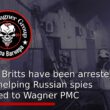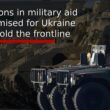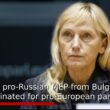Saltivka is Kharkiv’s largest residential neighborhood. It spreads across three administrative districts. About half a million people lived here – a third of the city’s population – before Russia’s full-scale war on Ukraine. Built in the late 1980s to early 1990s, it is located on the outskirts of Kharkiv. It consists of prefabricated houses that look like twins.
The Russian army attacked Kharkiv from this side, coming very close to the Kharkiv beltway. It was this area that took the brunt of the Russians who tried to storm the city. It suffered the most as a result. The Ukrainian Pravda visited Saltivka and talked to locals whose homes and lives Russia destroyed.
The “Heroes of Labor” Metro Station was the heart of Saltivka before February 24, 2022. There were always a lot of people on the streets. Life was bustling.
Here, among the endless prefabricated houses – there were two large shopping malls, where residents from all over Kharkiv were doing shopping, a large market, cinema, supermarkets and catering. Recently, the territory was landscaped and “I love Kharkiv” board was installed.
No trace of the former sweet life is left now after the active hostilities. Russian rockets hit both malls. The market burned down. Cafes, shops and homes were also shelled. Today, burnt-out pavilions and broken glass remind of Russia’s war crimes. But there is no mass destruction here.
Currently, access to Saltivka is open only to local residents, the military, and law enforcement. One of the servicemen became our guide in the area, but at his request, we will not name him.
“Heroes of Labor got hit, but not the same way as Saltovka did,” explains our guide.
The Les Serdyuk Street takes us from the Heroes of Labor to Saltivka. There used to be very active traffic here. If you go straight, this street can take you to the village of Tsyrkuny, which was considered “elite” among summer house vacationers.
On the first day of the scaled-up invasion, the Tsyrkuny were occupied by the Russians who were firing on Kharkiv. In early May, the village was liberated by the Armed Forces of Ukraine. But it is still under the enemy fire.
Today there are no cars in this once popular direction, there are frequent checkpoints on the road. We pass the stop North Saltivka-3. Another 300 meters – and we’re there.
We park and look around. On the left – burned garages. To the right one sees a broken-down gym and half-ruined shops that have been changed beyond recognition. There are Czech hedgehogs against tanks on the ground.

supermarkets, schools, kindergartens, gyms, etc.
One and a half dozen people with brooms are diligently sweeping the road from the rubble. We try to get in touch with them. But the woman in the orange vest, who shows with all of her appearance that she is in charge here, snaps in the commander’s voice: “Don’t interfere!”
Her colleague, Nadiya, turns out to be more sociable, saying that she and the others are employees of the second trolleybus depot. “We are now dismantling the blockages that the ‘brothers,’ so to speak, have arranged for us,” – explains Nadiya. – “we are always happy to help our hometown, our people.”

However, as soon as you see what the Russians have turned into a once quiet area with a developed infrastructure, it becomes clear that this cleaning and rebuilding will not happen soon. And it is unclear whether it will happen at all. “The Russian World ‘freed’ me from my home”
Next to the ruined gym, a playground is sinking in the grass, where no one has been playing for more than three months. A trench stretches through from it like a snake. In the background – a typical for this area high-rise from prefabricated panels. A large black spot on it is the result of the fires.
“One of the advanced units of the Russian army came in here,” explains our guide. “You see, they fired stupidly at residential areas. They are not people, they are beasts. We will now go around from that side – there are just destroyed houses. They are generally unsuitable for dwelling. They are only for demolition.”

Lesya Serdyuka Street intersects with Natalia Uzhviy Street, the most war-torn street in Kharkiv. The Russians were stopped about a kilometer from here, just behind the beltway.
We pass into the courtyards and find ourselves at the epicenter of a real post-apocalypse. There seems to be no living space here. There are houses without windows everywhere, blackened from soot. They gape traces of shelling. There are motionless cars with broken glass at the entrances.
The streets are deserted. The area seems almost extinct. At last, we see rare passers-by, a mother with a son in his twenties, loaded with things.
“We don’t have time to talk at all. We came from God knows where, I’m sorry,” the woman said.

e continue and meet a passerby in a cap and a hoodie. “Well, are they just driven away now?” He asks.
The man’s name is Oleksandr. He says that he works in security at a “serious firm”. He has lived in Saltivka for 15 years. “I communicate with my house. It used to be my home. But only ruins remain. The Russian World has come, the ‘liberator.’ They freed me from my home,” he smiles bitterly. “The very first hit was on February 25, I was at home. I moved to people who are like relatives. It’s in the city, it’s more or less quiet there, but I still feel awkward. We will, of course, ask for housing compensation. It is necessary to complete the online registration in the Diya app. But where can I go? An audit will be carried out to check the damage. Perhaps they will need to demolish the building.”

Kharkiv residents from other districts often found it difficult to navigate Saltivka because the prefabricated-panel buildings were so similar.
Now there is a difference – the degree of destruction. Black traces of fires, for example, are sometimes limited to an area of a couple of sections, but sometimes they reach a height of ten floors and cover the house almost completely, as if some harmful skin disease.
“This area has gone through fifth hell. It experienced all the horrors,” says our guide.
Tishki, Bobrovka, Kutuzovka, Rogan – all these neighborhoods were getting constantly hit from different sectors. The Russian were standing close to the city, the distance from the beltway was minimal.
All kinds of amunitions were used here – from volley-fire systems up to large-caliber barrel artillery and aircraft artillery – FAB-500, a vacuum bomb.
There was an apocalypse here, everything was burning and blazing. Imagine every house burning, completely, constantly, somewhere fading a little but then picking up automatically in a new house. The plane flies in, drops a bomb. Thus destruction. People who were still hiding in the basements are leaving. There are only very few residents left in the area now, perhaps twenty people still live here.”

We meet an intellectual-looking man near the building on 64 Natalia Uzhviy Street, with a partially burnt facade. His name is Andriy. He is a publisher.
“I myself am a volunteer, I go point to point to help take out things. The house where I live now was not damaged, thank God, neighborhood #605, a couple of kilometers away from here,” he explains.
“My relatives lived here on the third floor for 15 years. Some things survived, of course. There is something to salvage. Now I’m going to move the dishes.
How to live here in this landscape? You know, there are two philosophies here – either you are in the war mindset, and it drains you, or you just live and look for moments of joy.
Scary, full of fear for the loved ones, worrying about the future. Or it’s just the bitterness for the country.”
We are met a confused woman with long disheveled hair.
“Here’s a local, she still lives here, talk to her” – suggests Andriy.

A local resident introduces herself as Svitlana. She is a retiree. She speaks excitedly and confusedly. It seems that the war not only destroyed her house, but also irreversibly hit her psyche.
“I live here with another woman so it’s not scary or boring,” she says. “All the shelling was in front of our eyes. We hid in the bathroom on the second floor. It rumbled so loudly that it is beyond words. It was useless to hide in the basements because they were flooded in the back side of the building. All the pipes were broken in the cold. And you saw it, everything in the basements was blown away by the explosions.
In about a week or ten days, our heating and electricity were turned off. Then all the apartments began to get flooded because the water thawed. Then the water supply was blocked in mid-March. We had a reserve of water supply, a full bath. Now it’s gone. We can’t wash ourselves, we got no water. Soldiers were bringing drinking water. Now volunteers bring it periodically. But no water for the toilet or to wash. It’s terrible. I have health problems, it’s hard for me to fetch water, I don’t have the strength.”
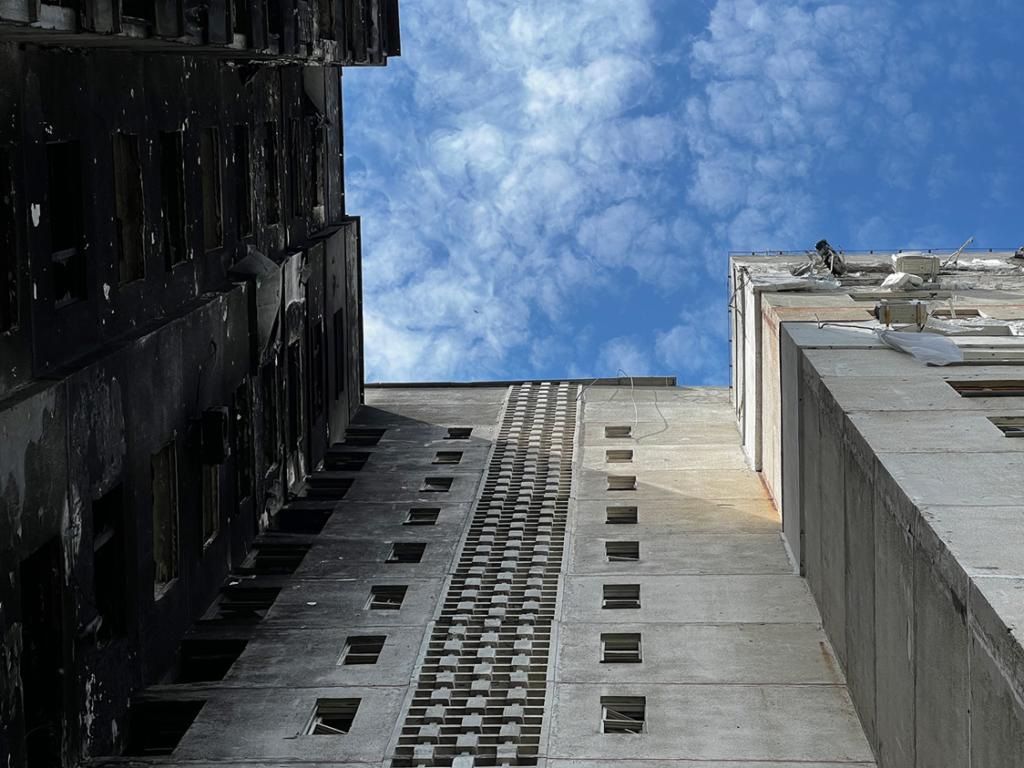
When asked how she and her roommate ate here in the midst of the bombing, Svitlana does not answer directly – she only shows how out of size her clothes are.
“The worst thing is to survive, eating is a less immediate concern,” she says.
You know, neighbors along the corridor got hit even worse. You can see a cracked panel on the balcony. The frames were blown away on the balcony and in the bedroom. They got see-through holes. On our floor, the door is blown away on the opposite side of the corridor. Imagine the power!
I don’t know how I survived. I had so much fear. I thought that there were no stairs there and when it was over, I would not be able to go down from the third floor. There on the third floor knocked out concrete partitions, v, broke everything. In general, horror. “
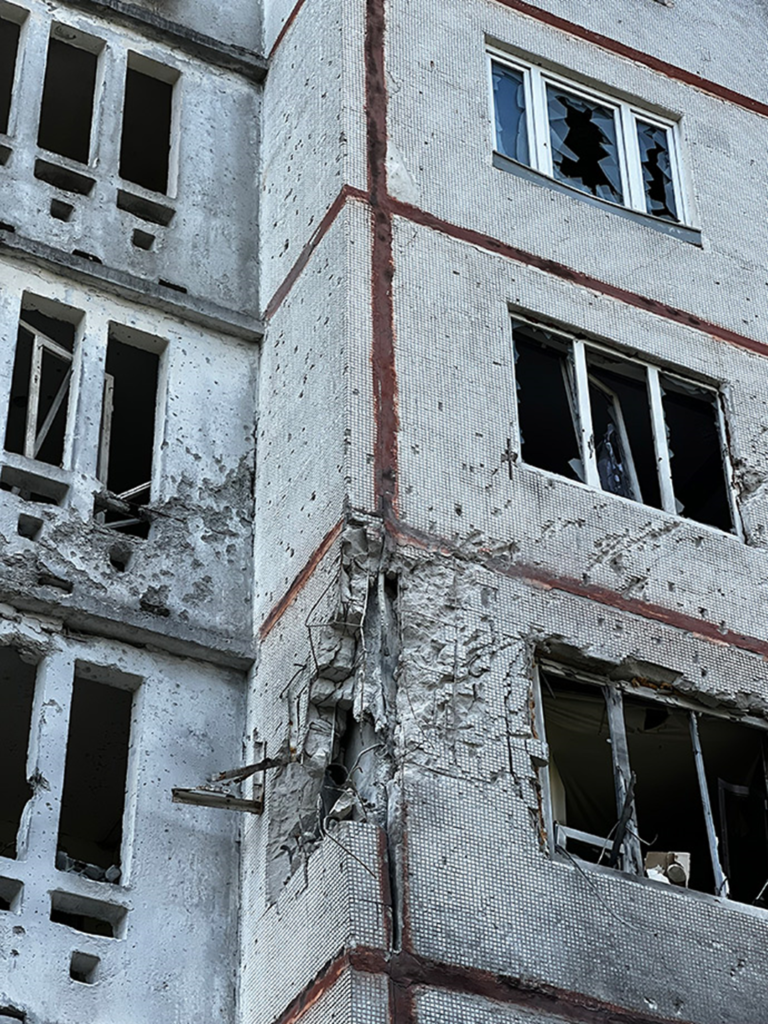
Svitlana does not let us say goodbye and urges not only to write about her misfortunes, but also to contact the local authorities. “Contact someone at the city hall, I am asking you. I have no access and nothing goes to the subway from us!” she urges us.
Let them do something, let them come and find out what’s going on. They should turn back on the water, at least one riser. Connect our third entrance to electricity or a generator, at least to my apartment. It doesn’t matter if they decide that the apartment building needs to be for demolished…
We are almost like participants in the hostilities. But we are 63-64 years old. Tell them please, the two women are not young, unhealthy. They are asking them. We are still alive!”
“It’s really Prypyat, there is no need to demolish it”
There has always been a lot of greenery on Saltivka, and now it seems to have outgrown even more. Lilac blooms profusely under the windows of ghost building that is devoid of any signs of life. Birds are chirping, the sun is shining, the air is light and fresh.
If you close your eyes, it may seem that the street is normal spring. But you only have to look around, and the imaginary sense of peace dissipates.
Pieces of concrete, broken window frames, broken windows, broken boards torn from the wall heating battery, blackened kitchen utensils, clothes torn to pieces, and overturned garbage cans are lying underfoot. We find a ready-meal package of the “world’s second army” near one of the buildings.

The ground is bitten by funnels of various sizes. Some of them have turned into natural dumps.
“It’s from the “Peon,” a 203-mm artillery gun,” our guide points to one of the large funnels. “It leaves such pits. It suppresses the morale of the infantry when it flies near them.”
He immediately warns: “Do not come close to that building. There is a broken panel.”
– And what made the holes in the buildings? We ask.
– This is a direct hit by artillery shells from barrel artillery. Grad MLRS does not break through the ground the same way.
We continue to wander the labyrinths of Saltivka’s yards. Along with a pile of broken plates, we meet a couple with bags – a bearded man in the chameleon glasses with a large shopping bag and a woman with a backpack and jacket tied at the waist. Before the start of the full-scale war, they were engaged in tourism, until recently the biggest challenge for their work was the pandemic.
– How did you live here before February 24? – we remember that most residents of Saltivka have always called it the best despite stereotypes about the area.
“Everything was fine, everything is close to us here,” Valeriy explains. – the ATB grocery store is 100 meters away, and everything is within a walking distance. The metro is also within a walking distance. Our car is parked in the yard, we couldn’t get out.
“We refueled before that, and I think this started a series of events that were not very good for us,” Inna adds. – The car stalled, and on February 25 we agreed to hand it over to the mechanic.
– Then the hood was pierced, a fragment hit the gas tank.

In March, the house where Inna and Valery lived for 30 years became a constant target of enemy shelling.
“Our house got hits roughly 15 times. The first time on March 2 – most likely with a mortar, because there was a strong fire,” recalls Valery and draws attention to the holes in the facade: And this, perhaps, even tanks punched – they came close, and sometimes hit with a direct hit.”

On the morning of March 3, the couple left after the first strike. Their apartment was broken.
“We rushed into the kitchen. There was a hole between the landing and the kitchen, probably from a large fragment because in front of the building there are two funnels about three meters each,” – – says Valery.

We walk another hundred meters and see real ruins – a house without a roof and with a broken front wall, blackened and perforated, with pieces of concrete and reinforcement hanging lifelessly in the air, completely empty inside. Piles of debris and broken trees are next to it.
We pass another hundred meters and bachimo right ruins – budinok without a dahu and with a wrinkled front wall, blackened and perforated, with shmaks of concrete and reinforcement, which hang lifelessly on the floor, an absolutely empty middle.
“These are the biggest ruins – an aerial bomb hit from above,” says our guide.

Nearby, a man in a Coca-Cola T-shirt and in white gloves is squatting with tools near a white Volkswagen van. Here, on Metrobudivnykiv Street, Denis has lived since the neighborhood was built in 1990. He left on March 2.
“Here, people hid wherever they could,” Denis confesses. “There is not a single bomb shelter in this area, not in new buildings, nowhere. Only damp basements and, they are very low even in kindergartens and absolutely not protected.
The first hit was on the 5th of March on the sixth floor, in my mother’s apartment. It is on the left side, in the first entrance, where there is no wall.
(They were shooting), as I understand it, from somewhere in Bobrovka (the village behind the beltway). It is not clear – a direct tank shell or some kind of another shell flew in, because it pierced everything and flew out of the balcony. There was no fire, the walls were knocked down, everything was smashed. There are slabs on appliances and furniture.”
“People hid where they could,” says Denis.
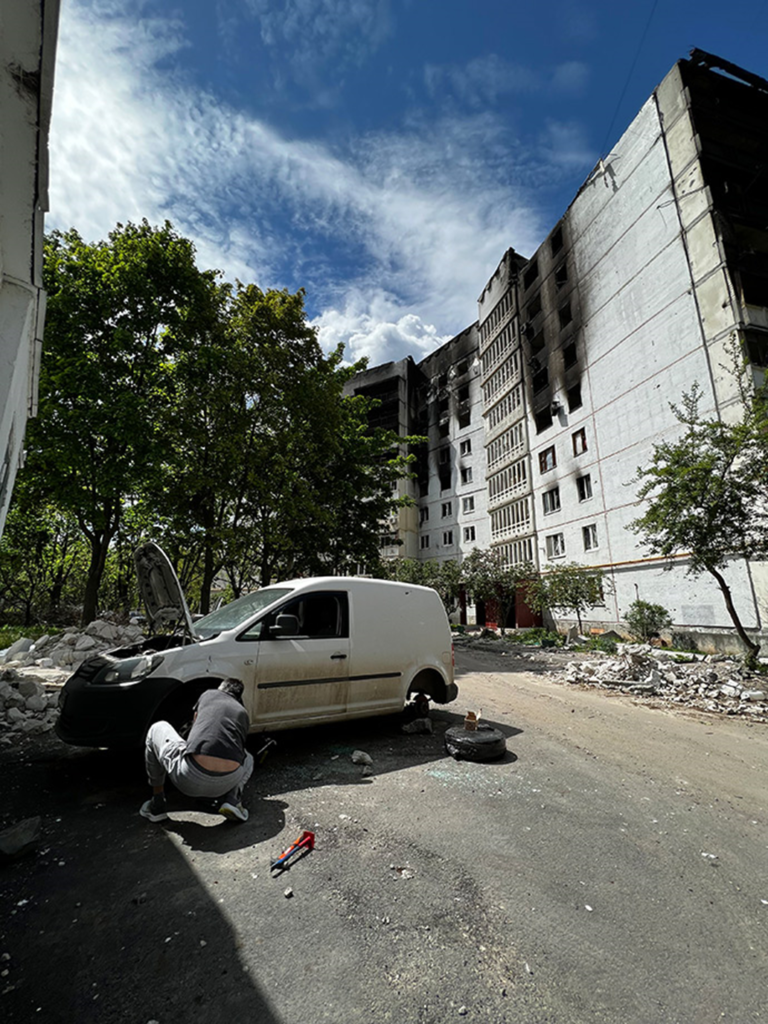
There is a gaping hole in the body of the car being repaired by Denis, there are no rear wheels.
“The car was parked here, it was woken up on the first day,” he recalls, “maybe someone had to leave urgently.”
The car was lucky, it is well preserved. Now I’ll change the wheels and go. Here is the second car near the 72nd house, my black jeep caught all the “Grads” from March 2. “
According to the Ministry of Defense, 70% of residential buildings and infrastructure in Saltivka have been destroyed. Denis does not see a future for the district and suggests just to leave everything here as is.
“You don’t have to be a builder to see that there are no floors in this high-rise at all.” Going further is the same. And who will come to live here? This is really Prypyat, there is no need to demolish, just let people come in – you and foreign journalists. They do not understand all this in the picture.
– Leave it as a grim memory for the Russian World?
“Of course!” When there was military action in Donetsk, war, no one felt anything, they said that everyone was shooting somewhere.
But when you sit in the basement for a week, when bombs fly at you… In the garden behind the building, a vacuum bomb fell. People were sitting there. We sat there until March 2. There was a hit on March 4th.

Before the war, Denis worked as a private entrepreneur, delivering products to restaurants. Now I’m thinking what to do next.
“Restaurants in Kharkov do not want to open. I will go to Kyiv, to build, probably. We will rebuild! What other choices do we have?”
***
Trying to understand the scale of the tragedy experienced by each of the locals, we return to the car. Communal workers continue to avenge the road, on the roadside they cook tar in a potbelly stove, four men carry a refrigerator in an unknown direction.

Suddenly there are deafening sounds of explosions. “Grad!,” – says our guide.
Active hostilities continue on the beltway, and the Russians continue to fire on the positions of our military, which pushed them away from Kharkiv. Sometimes – albeit much less often than before – it gets to Saltivka.
The next day, the whole of Kharkiv, to which people have just begun to return, was shaking from the explosions. Large-caliber Pion guns and volley fire systems wee fired from the Russia Belgorod region, in particular, the Pavlove Pole area. Eight civilians were killed, including a five-month-old baby, and another 19 were injured.
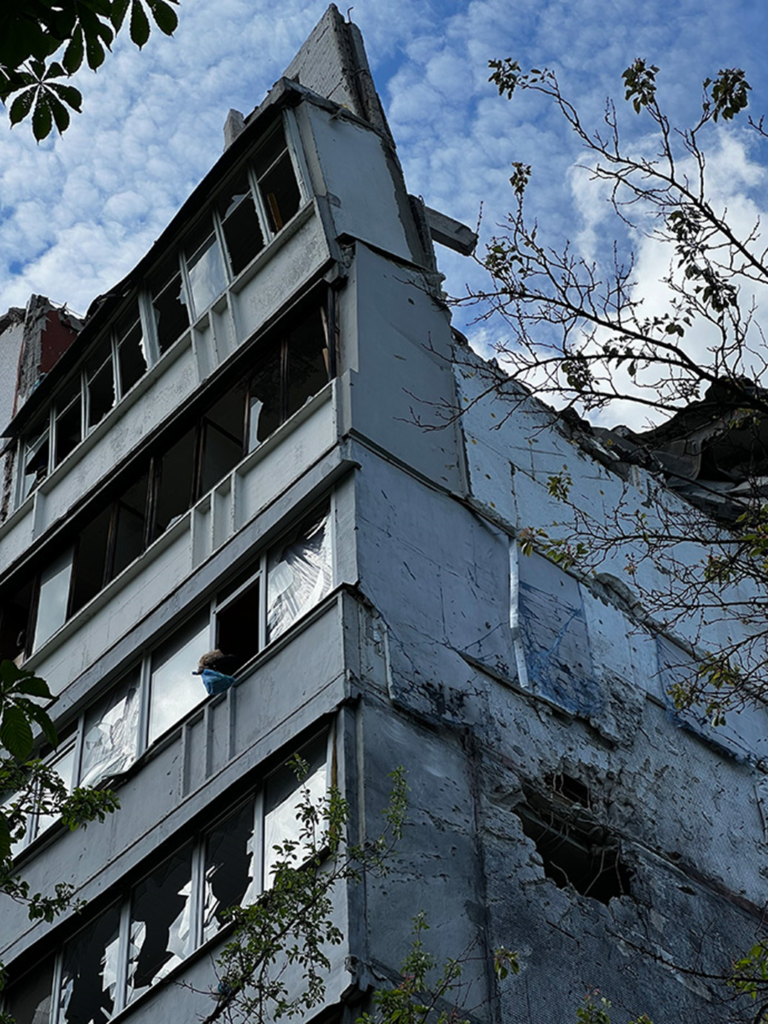
The Russian World continues to bring death and destruction, even where it seems to have lost.
Reference: The Ukrainian Pravda
